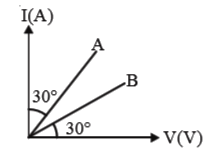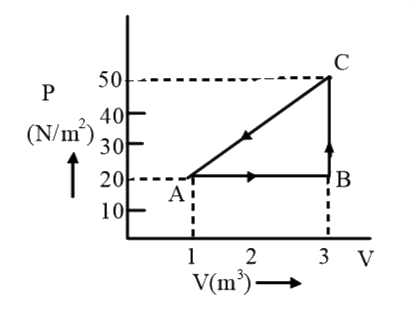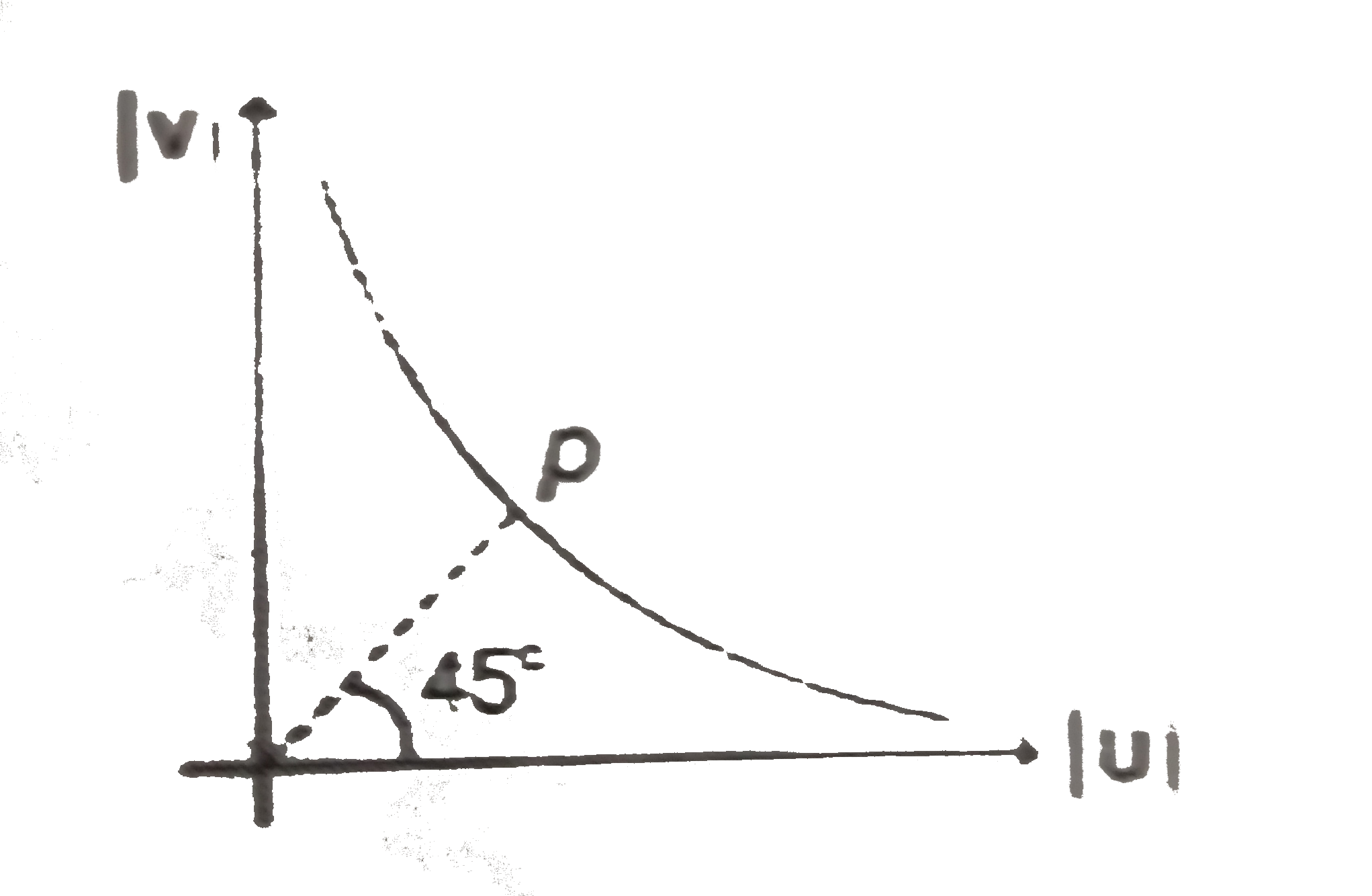The graph between u and v for a convex mirrorr is




The correct Answer is:A
To determine the graph between u (object distance) and v (image distance) for a convex mirror, we can follow these steps:
1. Understanding Convex Mirrors:
- Convex mirrors always produce virtual, upright, and diminished images. The image distance v is always negative for a convex mirror, as per the sign convention.
2. Ray Diagram Analysis:
- When the object is placed at a very large distance (u → ∞), the rays coming from the object are parallel. These rays appear to diverge from the focus behind the mirror. Therefore, the image is formed at the focus (v = -f).
- As the object comes closer to the mirror (decreasing u), the image distance v also changes. The image moves closer to the mirror as u decreases.
3. Behavior of u and v:
- As u approaches infinity (very far away), v approaches the focus (which is a negative value).
- As u decreases and approaches the mirror, v will also decrease (becoming less negative) but will always remain negative.
4. Graph Characteristics:
- The graph between u and v will show that as u increases (moving towards infinity), v approaches a constant negative value (the focus).
- As u decreases (moving towards the mirror), v will also decrease but will remain negative, indicating that the image is moving closer to the mirror.
5. Conclusion:
- The correct graph will show a curve that approaches the x-axis (u-axis) as u increases and will also approach the y-axis (v-axis) as u decreases, indicating that v is negative and approaches zero but never becomes positive.
Final Result:
The graph between u and v for a convex mirror is a curve that approaches the x-axis as u increases and approaches the y-axis as u decreases, indicating the relationship between the object distance and the image distance.
- Convex mirrors always produce virtual, upright, and diminished images. The image distance v is always negative for a convex mirror, as per the sign convention.
- When the object is placed at a very large distance (u → ∞), the rays coming from the object are parallel. These rays appear to diverge from the focus behind the mirror. Therefore, the image is formed at the focus (v = -f).
- As the object comes closer to the mirror (decreasing u), the image distance v also changes. The image moves closer to the mirror as u decreases.
- As u approaches infinity (very far away), v approaches the focus (which is a negative value).
- As u decreases and approaches the mirror, v will also decrease (becoming less negative) but will always remain negative.
- The graph between u and v will show that as u increases (moving towards infinity), v approaches a constant negative value (the focus).
- As u decreases (moving towards the mirror), v will also decrease but will remain negative, indicating that the image is moving closer to the mirror.
- The correct graph will show a curve that approaches the x-axis (u-axis) as u increases and will also approach the y-axis (v-axis) as u decreases, indicating that v is negative and approaches zero but never becomes positive.
The graph between u and v for a convex mirror is a curve that approaches the x-axis as u increases and approaches the y-axis as u decreases, indicating the relationship between the object distance and the image distance.
Topper's Solved these Questions
- BOOK - DC PANDEY ENGLISHCHAPTER - RAY OPTICSEXERCISE - medical entrance special format question23videos
RAY OPTICS
- BOOK - DC PANDEY ENGLISHCHAPTER - RAY OPTICSEXERCISE - Medical entrance gallary76videos
RAY OPTICS
- BOOK - DC PANDEY ENGLISHCHAPTER - RAY OPTICSEXERCISE - Checkpoint 9.710videos
RAY OPTICS
- BOOK - DC PANDEY ENGLISHCHAPTER - NUCLEIEXERCISE - C MADICAL ENTRANCES GALLERY46videos
NUCLEI
- BOOK - DC PANDEY ENGLISHCHAPTER - REFLECTION OF LIGHTEXERCISE - Subjective9videos
REFLECTION OF LIGHT
Similar Questions
The graph between 1v and 1u for a concave mirror looks like.
View SolutionThe graph between 1v and 1u for a concave mirror looks like.
View SolutionThe relation between U, P and V for an iodeal gas is U=2+3PV. What is the atomicity of the gas.
View SolutionFigure shows graph between I and V for two conductors A and B. Their respective resistances are in the ratio.
 View Solution
View SolutionDifferentiate between concave mirror and convex mirror.
View SolutionA student measures the focal length of a convex lens by putting an object pin at a distance u from the lens and measuring the distance v of the image pin. The graph between u and v plotted by the student should look like
View SolutionWhich method is more accurate in the determination of f for a concave mirror.
(i) u versus v or
(ii) 1u versus 1v graphs ?View SolutionIn the diagram, the graph between volume and pressure for a thermodynamical process in shown. If UA=0,UB=20J and the energy given from B to C is 30J, then at the stage of C, the internal energy of the system is –
 View Solution
View SolutionAs the position of an object (u) reflected from a concave mirror is varied, the position of the image (v) also varies. By latting the u changes from 0 to +∞ the graph between v versus u will be
View SolutionThe |u|,|v| graph for a concave mirror is a shown in figure. Here |u|>|f|. A line passing through origin of slope 1 cut the graph at point P. Then co-ordinate of point P are
 View Solution
View Solution

